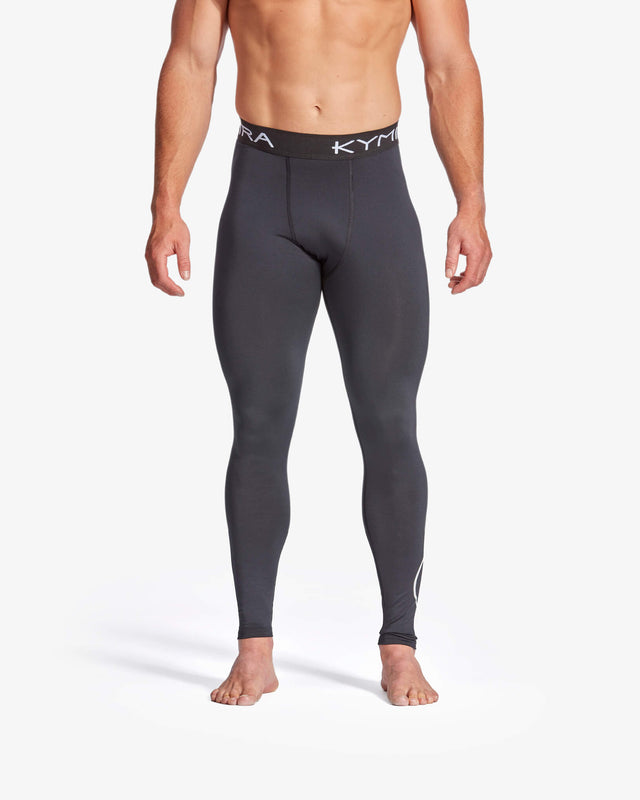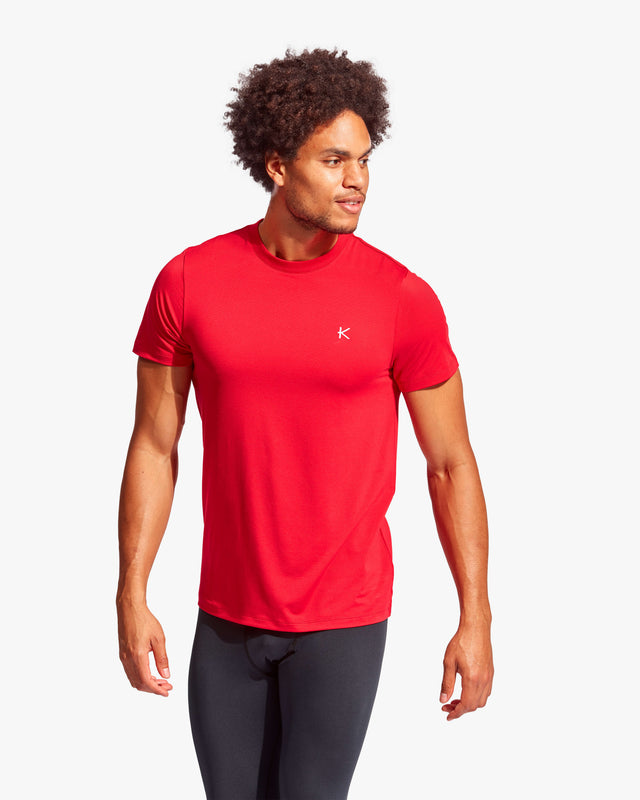DOMS: Reduce Muscle Soreness Naturally with Infrared

Steve Hoyles
Anyone who has played sport, exercised or moved their body with any degree of extended effort will be familiar with Delayed Onset Muscle Soreness (DOMS). It’s the tax we pay for an active life!
The muscle discomfort that can set in 24 to 72 hours after an intense workout can disrupt your routine, hinder performance, and test your motivation. But what if there
was a natural way to mitigate this soreness without relying on pharmaceuticals?
There is.
Infrared technology is gaining traction in the elite sports and fitness world, in part for its ability to accelerate tissue recovery and reduce inflammation.
In this post, we'll explore what DOMS is, its causes, and proven natural strategies to combat it, with a spotlight on infrared. Drawing on peer-reviewed research, we'll delve into how infrared can be integrated into your recovery toolkit, particularly through innovative wearable solutions like those from KYMIRA.
Understanding DOMS
Contrary to popular belief, DOMS isn’t only caused by hard training. It mostly occurs when muscles are subjected to unfamiliar or extensive eccentric (lengthening) muscle contractions such as during downhill running, skiing or weightlifting.
This leads to microscopic tears in muscle fibres, triggering an inflammatory response as the body repairs the damage. The classic DOMS symptoms include tenderness,
stiffness, and reduced range of movement, often peaking at 48 hours post-exercise.
Research indicates that DOMS is exacerbated by factors like dehydration, poor nutrition, and inadequate warm-ups. While it's a normal adaptation process that builds
strength over time, managing it effectively allows for consistent training without unnecessary downtime or increased injury risk.
Using Infrared Strategies to Alleviate DOMS
The Far Infrared (FIR) light penetrates the skin to interact with cells at a molecular level. It stimulates the production of nitric oxide (NO), a vasodilator that enhances blood circulation, oxygen delivery, and nutrient uptake in muscles. This process reduces inflammation, clears lactic acid buildup, and accelerates cellular repair key factors in combating DOMS.
Unlike heat packs, which provide superficial warmth, infrared works deeper, promoting
mitochondrial function and ATP production for faster energy restoration in fatigued muscles. It's a non-invasive, drug-free method that's been studied extensively in sports science.
Backed by Research: Evidence for Infrared in DOMS Reduction
The body of research in support of infrared use with soft tissue recovery is strong and
getting stronger.
A research study titled ‘A Preliminary Investigation of the Efficacy of Far-Infrared-Emitting Garments in Enhancing Objective and Subjective Recovery Following Resistance Exercise’ [1] was carried out in 2025 by the University of Notre Dame.
The researchers found that… ‘the participants in the FIR group reported faster subjective recovery, with a readiness to resume activity perceived within 48 h, compared to slower recovery in the placebo group.’
These conclusions build on similar findings from a study almost a decade earlier, titled ‘Effects of far infrared rays emitting clothing on recovery after an intense plyometric exercise bout applied to elite soccer players: a randomized double-blind placebo-controlled trial’ [2].
The researchers in this study assessed recovery rates of subjects wearing infrared clothing, following eccentric exercises. They found that ‘FIR clothes may reduce perceived DOMS after an intense plyometric session performed by soccer players.’
One of the most effective mechanisms by which recovery is enhanced is through deeper, higher-quality sleep. Restful sleep enhances tissue repair, which will reduce
the severity of DOMS significantly. Infrared has been shown to help sleep quality significantly.
A research paper titled ‘Physiological Evaluation of Far Infrared-Emitting Garments on Sleep and Thermoregulation’ [3] explored the impact infrared garments have on sleep and recovery.
The results were clear, with researchers concluding… ‘results suggest that sleeping with FIR in comparison to with control, has a beneficial effect to facilitate restorative sleep’.
Integrating Infrared with KYMIRA: Wearable Recovery Redefined
At KYMIRA, our infrared-infused fabrics harness bio-responsive minerals that absorb body heat and re-emit it as FIR energy. This creates a continuous therapeutic effect
whilst the garments are being worn.
Unlike bulky devices, KYMIRA garments such as leggings, tops, and socks integrate seamlessly into your wardrobe, providing passive recovery benefits. They can be worn at all stages of movement and recovery, so you’ll benefit before, during and after
exercise.
Athletes report reduced DOMS, quicker return to peak performance, and overall enhanced well-being when using KYMIRA products. Whether you're recovering from a
marathon or a high-intensity interval session, incorporating infrared wear can make a tangible difference.
These aren’t placebo effects – as we’ve shown in the research, there’s a tangible,
evidence-based impact from KYMIRA’s infrared technology when it comes to recovery and DOMS.
Embrace Natural Recovery
There’s a temptation to overthink recovery, assuming we need cryotherapy chambers,
massage beds and hot-cold contrast therapies to ease muscle soreness. We’ve
shown this isn’t true – simply wearing infrared clothing is a quicker, more convenient strategy than the rest.
The good news is that DOMS doesn't have to derail your sporting or fitness journey. By combining tried-and-true natural methods with cutting-edge infrared technology, you can minimise soreness and maximise gains.
Backed by robust scientific evidence, infrared offers a safe, effective way to support your body's innate healing processes.
If you’re ready to experience the difference that infrared can make to your performance and recovery, explore KYMIRA's range of infrared performance wear and regenerate
what's possible in your training. Your muscles will thank you.
References
[1] https://pmc.ncbi.nlm.nih.gov/articles/PMC12286214/
[2] https://pmc.ncbi.nlm.nih.gov/articles/PMC4993144/
[3] https://www.biorxiv.org/content/10.1101/2024.06.13.598953v1.full


